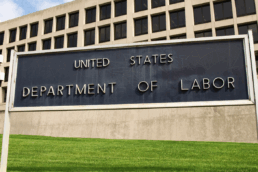United States immigration policy has been at the forefront of media coverage since President Donald Trump took office in January. Unfortunately, much of what has been reported is either exaggerated or inaccurate. Berardi Immigration Law has spent the first quarter of the year addressing immigration in the news, and we have addressed the media on several occasions. We are here to clarify what changes President Trump has proposed, what these changes really mean for America, and how these changes will play out. We are here to separate fact from fiction.
Fiction. Issuing executive orders on immigration is an abuse of Presidential power.
Fact.The fact is, executive orders are completely legal. Executive power is vested in the President of the United States by Article II of the U.S. Constitution, and/or by an Act of Congress. An executive order carries the full force of the law, but can still be challenged by the States as unconstitutional. As is the case with President Trump, two of his most recent orders were blocked by the federal Court of Appeals. With regard to immigration, the power to issue executive orders stems specifically from Article II of the Constitution and various federal statutes including: The Immigration and Nationality Act (INA), the Secure Fence Act of 2006, and the Illegal Immigration Reform and Immigrant Responsibility Act of 1996. Since taking office, President Trump has issued five executive orders directly related to U.S. immigration policy:
- The first of Trump’s immigration orders, titled “ENHANCING PUBLIC SAFETY IN THE INTERIOR OF THE UNITED STATES,” is aimed at revamping the removal process of all aliens who are unlawfully present in the U.S. It directs the Secretary of the Department of Homeland Security to hire an additional 10,000 immigration officers, and to authorize State and local law enforcement officials to perform the functions of immigration officers. It also replaced the Obama administration’s Priority Enforcement Program (PEP), also known as “catch and release,” with the immigration program known as “Secure Communities.” Under the previous PEP, ICE would be notified of an individual’s immigration violation, but that individual would not generally be detained while the removal process played out. He or she would be “released” back into the community. Whereas under the “secure communities” program, ICE will detain that individual until he or she is removed from the country.
- The second of Trump’s immigration orders, titled “BORDER SECURITY AND IMMIGRATION ENFORCEMENT IMPROVEMENTS,” focuses on border security. It directs the Secretary of the Department of Homeland Security to find and allocate federal funds to build a wall and several detention facilities along the southern border of the United States. It directs the Secretary to hire an additional 5,000 Border Patrol agents, and to assign additional asylum officers and immigration judges to immigration detention facilities.
- The third of Trump’s immigration orders, titled “PROTECTING THE NATION FROM FOREIGN TERRORIST ENTRY INTO THE UNITED STATES,” focuses on reforming the visa-issuance process. The order suspended for 90 days the entry of certain immigrants and nonimmigrants from seven countries: Iran, Iraq, Libya, Somalia, Sudan, Syria, and Yemen. It also suspended the United States Refugee Admissions Program (USRAP) for 120 days, and suspended indefinitely the entry of all Syrian refugees. The purpose of these suspension was to give the Secretaries of State and Homeland Security time to implement uniform screening standards for all immigration programs, and to reform the USRAP application and adjudication process. The effects of the order were immediate and widespread. Thousands of visas were canceled, travelers were prevented from boarding airplanes bound for the U.S. or denied entry on arrival, and even some travelers were detained. After three days, two States challenged the order as unconstitutional and violative of federal law. It was eventually blocked by the Federal Court of Appeals for the Ninth Circuit on due process and religious discrimination grounds.
- The fourth of Trump’s immigration orders, titled “PROTECTING THE NATION FROM FOREIGN TERRORIST ENTRY INTO THE UNITED STATES,” was a modified version of the previously blocked order. It removed Iraq from the list of effected countries and attempted to clarify certain issues in the previous order that prompted judicial concern. This order was again blocked by a federal Court of Appeals for similar reasons.
- The fifth of Trump’s immigration orders, titled “BUY AMERICAN AND HIRE AMERICAN,” asks government agencies to review policies related to all visa programs. It asks these agencies to recommend changes to root out “fraud and abuse,” and to propose additional reforms so that H-1B visas are awarded to the most skilled or highest-paid applicants. This executive order comes as part of President Trump’s campaign promise to reduce the number of lower wage foreign hires in the U.S. workforce, and to bring job opportunities back to American employees. It is important to note, however, that it does not immediately change or impact the program.
Fiction. President Trump is planning to use the National Guard to control immigration.
Fact. President Trump relies upon local and state law enforcement to report immigration violations. In February, the Associated Press reported that the White House was planning to call in the National Guard to control immigration. The claims were based on an alleged draft memorandum from the Department of Homeland Security. The memo reportedly outlined a plan to mobilize as many as 100,000 National Guard troops, across 11 states, to round up unauthorized immigrants. Shortly after the story went viral, Press Secretary Sean Spicer addressed the media and sharply criticized the report. “There is no effort at all … to utilize the National Guard,” according to Spicer. “This is 100 percent not true.” However, under the Secure Communities Program established in March 2008, ICE, DHS, the FBI and local law enforcement agencies may work together to identify immigrants in U.S. jails who are deportable under U.S. immigration laws.
Fiction. Customs and Border Protection is abusing Fourth Amendment protections against unreasonable search and seizure by searching electronic devices at the border.
Fact.The truth is, Fourth Amendment protections do not apply at the border. The 9th Circuit Court of Appeals has ruled that if agents want to do a full forensic search they need to have a reasonable suspicion of wrongdoing, but the court stopped short of requiring officers to obtain a search warrant beforehand. Customs and Border Protection has been searching electronic devices without a warrant for decades, and this standard is applicable to all travelers, including U.S. citizens, green card holders and visa holders. A custom officer’s subjective belief that someone has, or is engaged in any wrongdoing, is enough to justify a search. This means that border officers can search a travelers’ physical luggage, digital devices and even social media accounts for almost any reason. Border officers can even keep your electronic devices for further examination, which could include copying your data.
Fiction. H-1B workers are stealing jobs from Americans because they can be paid less.
Fact.In reality, the H-1B visa program is designed to help U.S. companies recruit highly-skilled foreign nationals when there is a shortage of qualified workers in the country. The H-1B visa program, however, is not perfect, and similar to almost any piece of legislation, it falls victim to fraud and abuse. There have been multiple allegations that the H-1B program has been abused to bring in cheaper workers from overseas to fill jobs that would otherwise go to an American. Research indicates that the top recipients of H-1B visas each year are sponsored by third-party outsourcers, primarily from India, who then place foreign nationals at U.S. worksites. On the other hand, research also shows that American companies pay higher wages to their direct employees, suggesting that they’re going after true, highly-skilled employees while outsourcers recruit less expensive talent. The abuse of the H-1B program is the subject of recent reforms by USCIS and the Department of Labor, and proposed changes to the H-1B category by President Trump. When used properly, H-1B visas enable STEM employers to recruit highly-skilled foreign workers when they can’t find domestic talent to fill certain positions in the U.S. H-1B regulations require employers to prove that they are paying a “prevailing wage,” which is determined by the Department of Labor. An employer attempting to file an H-1B petition is obligated to show that it can pay the applicant the prevailing wage for someone in a similar position in the location where the work is primarily performed.
Berardi Immigration Law is committed to providing our clients with the most accurate and up-to-date information as immigration continues to be a hot button topic in the news. Check back periodically to read the latest!
Ready to have Berardi on your side?
Whether you’re a business looking to hire or a professional hoping to relocate, immigration law can be complicated. But you don’t have to do it alone. Put our experience to work for you.



